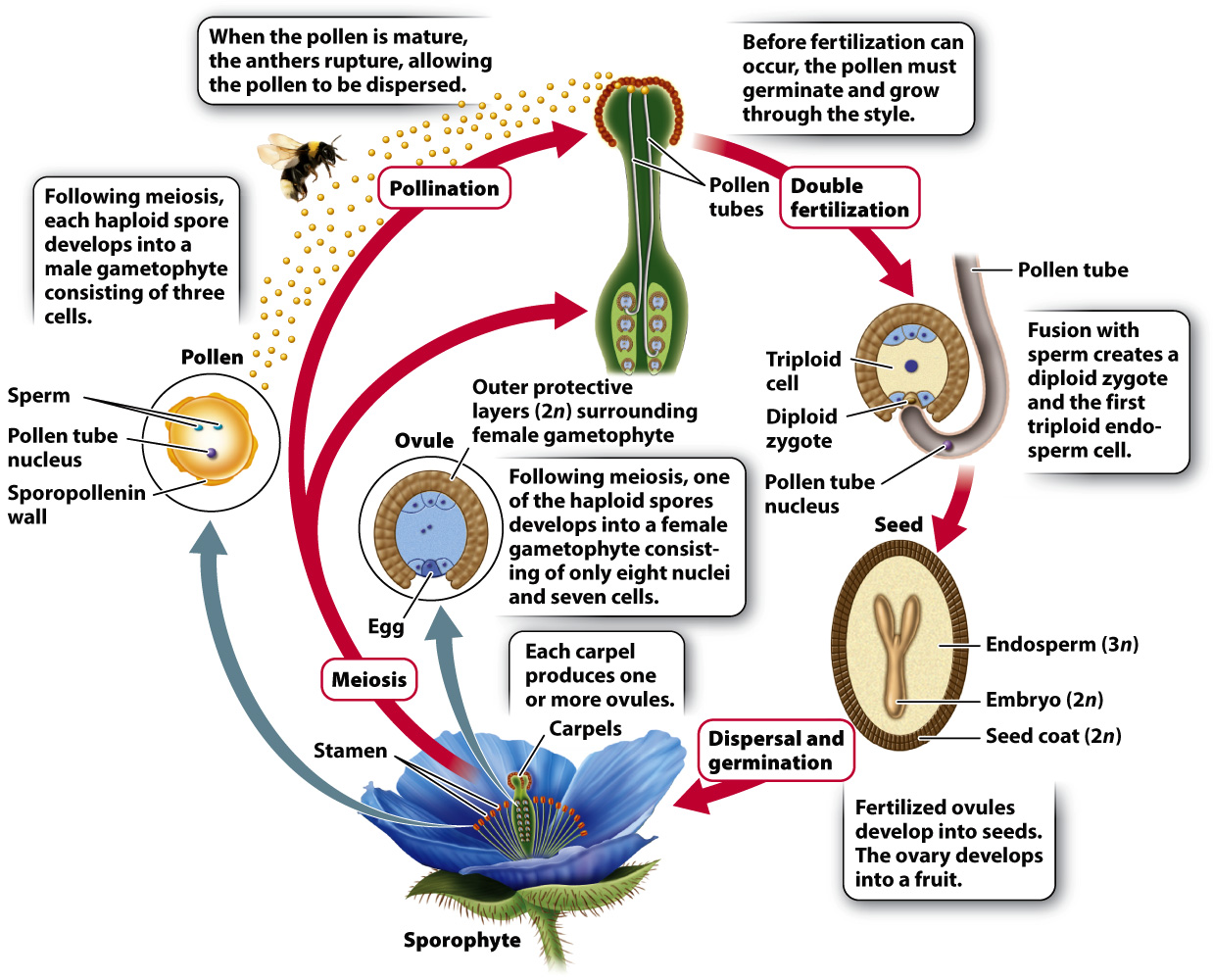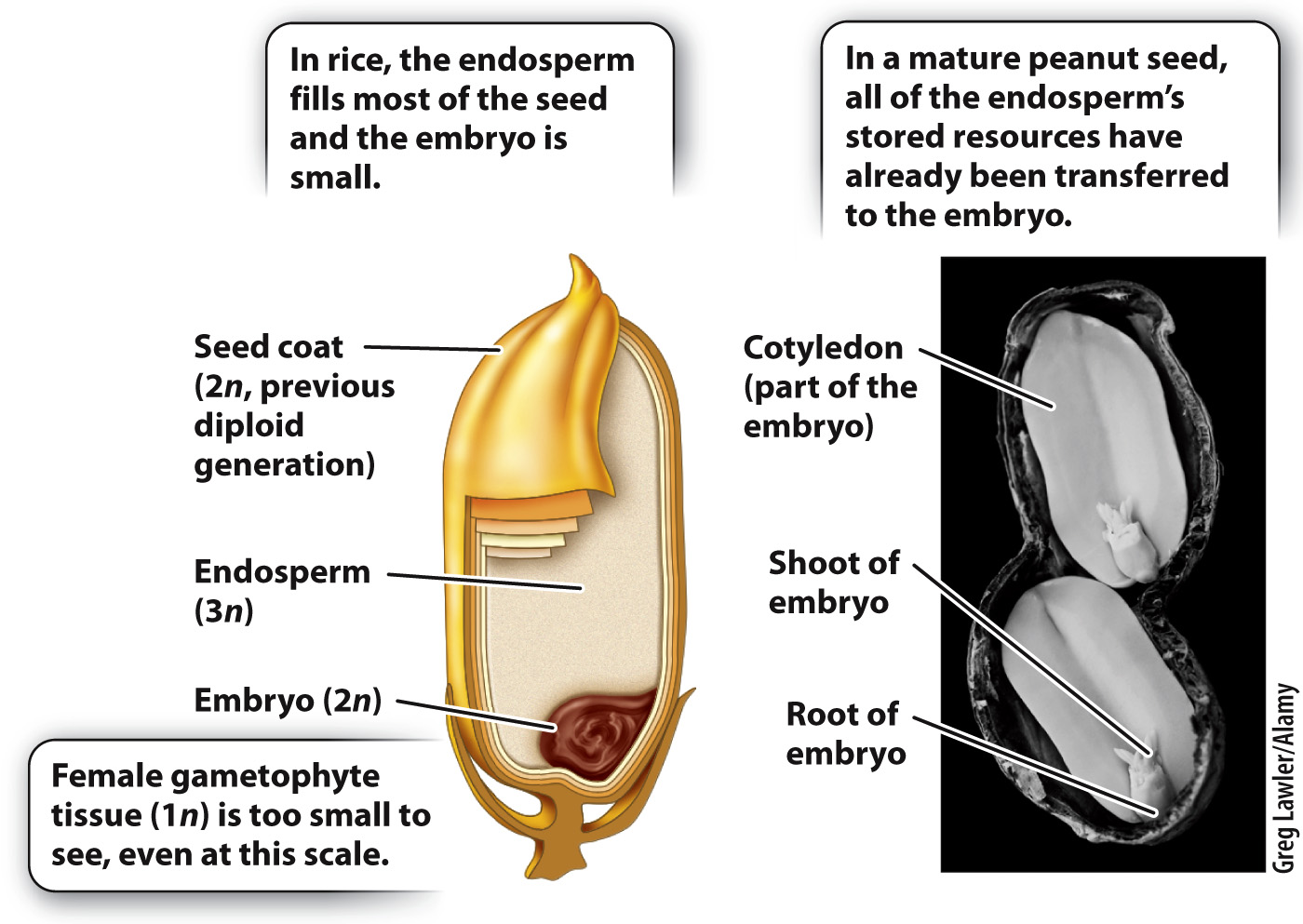Angiosperms delay provisioning their ovules until after fertilization.
635
As we have seen, a major trend in the evolution of plants is the decreasing size and independence of the gametophyte generation and the increasing prominence of the sporophyte generation. In angiosperms, this trend is taken even further (Fig. 30.18). The male gametophyte has only three cells: One of these cells controls the growth of the pollen tube, while the other two are male gametes or sperm. In most angiosperms, the female gametophyte contains only eight nuclei, arranged as six haploid cells (one of which gives rise to the egg) plus a central cell containing two nuclei. The female gametophyte of angiosperms is thus too small to support the growth of the embryo, as it does in gymnosperms. How, then, do flowering plants provide nutrition for the embryo to grow?

This is where the central cell of the female gametophyte, which contains two haploid nuclei, comes into play. During pollination, the two sperm travel down the pollen tube and enter the ovule (Fig. 30.19). One of the sperm fuses with the egg to form a zygote, just as occurs in all plants. The other sperm, however, unites with the two haploid nuclei in the central cell to form a triploid (3n) cell. This triploid cell undergoes many mitotic divisions, forming a new tissue called endosperm. In angiosperm seeds, it is the endosperm that supplies nutrition to the embryo. The process in which two sperm from a single pollen tube fuse with the egg and the two haploid nuclei in the central cell is called double fertilization.

Double fertilization and endosperm formation offer a distinct advantage. In pines and other gymnosperms, the female gametophyte provides food for the embryo. This provisioning occurs whether or not the egg is successfully fertilized, and so is potentially a significant waste of resources. In angiosperms, the endosperm develops only when fertilization has occurred. In many flowering plants, including corn, wheat, and rice, the mature seed consists largely of endosperm (Fig. 30.20). The embryo itself is small. As the seeds germinate, the embryo draws resources from the endosperm to help it become established. It is no overstatement to suggest that the human population is sustained mostly by endosperm produced in the seeds of cereal crops.

In other angiosperms, the growing embryo consumes all the endosperm before the seed leaves the parent plant. For example, a peanut has virtually no endosperm left at the time it is dispersed. Almost all the resources that were previously held within the endosperm have been transferred into two large embryonic leaves, called cotyledons, which form the two halves of the part of the peanut we eat. Thus, the embryo itself contains all of the stored resources that will nourish the growth of the seedling at germination.
636